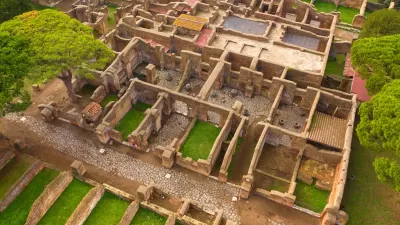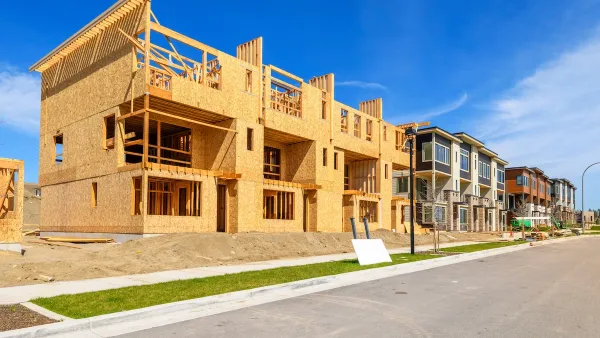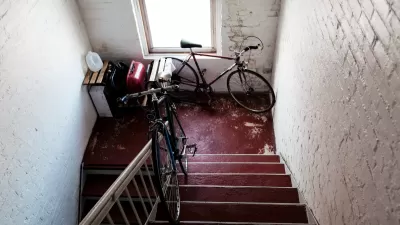The humble apartment, as a typology, has been with us for millennia.

The urban apartment, while it may feel like a modern invention, dates back thousands of years, writes Ashley Gardini in a piece for JSTOR Daily.
In the Americas, the ancient city of Teotihuacan housed up to 200,000 people in compact compounds. “While these may have looked a bit different than what we think of as apartments today, evidence shows that these structures ‘generally consist[ed] of several rooms at slightly different levels, arranged around open spaces (courtyards, refuse areas, and light wells) that serve[d] as places for ritual, rainwater collection, partial refuse disposal, and light provision.’” In ancient Rome, ‘insulae’ of up to five stories housed residents of crowded cities.
Later in history, planners and leaders attempted — with varying degrees of success — to sanitize and organize cities by building massive apartment blocks. As technology evolved, so did the ability of builders to construct larger and taller buildings. “In the twenty-first century, even as we continue to build larger and taller structures, architecture needs to respond to the climate crisis and other evolving environmental factors.” A wood-based material called mass timber is being explored as a sustainable alternative to other construction materials that is strong enough to use in buildings of up to 25 stories (to date).
FULL STORY: The Eternal, Essential Apartment

Planetizen Federal Action Tracker
A weekly monitor of how Trump’s orders and actions are impacting planners and planning in America.

Restaurant Patios Were a Pandemic Win — Why Were They so Hard to Keep?
Social distancing requirements and changes in travel patterns prompted cities to pilot new uses for street and sidewalk space. Then it got complicated.

Map: Where Senate Republicans Want to Sell Your Public Lands
For public land advocates, the Senate Republicans’ proposal to sell millions of acres of public land in the West is “the biggest fight of their careers.”

Maui's Vacation Rental Debate Turns Ugly
Verbal attacks, misinformation campaigns and fistfights plague a high-stakes debate to convert thousands of vacation rentals into long-term housing.

San Francisco Suspends Traffic Calming Amidst Record Deaths
Citing “a challenging fiscal landscape,” the city will cease the program on the heels of 42 traffic deaths, including 24 pedestrians.

California Homeless Arrests, Citations Spike After Ruling
An investigation reveals that anti-homeless actions increased up to 500% after Grants Pass v. Johnson — even in cities claiming no policy change.
Urban Design for Planners 1: Software Tools
This six-course series explores essential urban design concepts using open source software and equips planners with the tools they need to participate fully in the urban design process.
Planning for Universal Design
Learn the tools for implementing Universal Design in planning regulations.
Heyer Gruel & Associates PA
JM Goldson LLC
Custer County Colorado
City of Camden Redevelopment Agency
City of Astoria
Transportation Research & Education Center (TREC) at Portland State University
Camden Redevelopment Agency
City of Claremont
Municipality of Princeton (NJ)





























